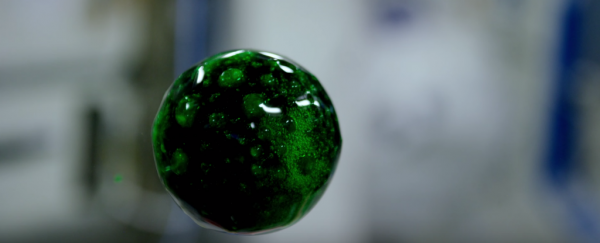Back in January, a SpaceX supply mission made a very special delivery to astronauts aboard the International Space Station (ISS) - the so-called Epic Dragon camera by digital cinema company, RED. It's capable of shooting at 300 frames per second at resolutions ranging from HDTV right up to mind-blowing 6K (6144 x 3160 pixels), which means it can record images with six times more detail than any other type of camera on the market. So what does that look like? Change your YouTube settings to "2160p 4k", and revel in the glory that is NASA's 4k footage of an effervescent tablet dissolving in a floating ball of coloured water.
By messing around with the settings on the video, you can actually make a direct comparison between the 4k images and the average HD view, which displays up to 1920 x 1080 pixels of resolution. Your fancy digital cinema would probably be able to project 2,000 to 4,000 pixels.
"This is a huge leap in camera technology for spaceflight," Rodney Grubbs, program manager for NASA's Imagery Experts Program at the Marshall Space Flight Centre in the US, said back in July. "These cameras have large sensors capable of very high resolution imaging at high frame rates. It is like having a high-speed 35MM motion picture film camera, but it is compact, can use lenses we already have up there, and it is digital. No film to return to Earth."
The reason for the floating bubble experiment is so the ISS astronauts can explore the phenomenon of water surface tension in microgravity. Water surface tension is the force responsible for turning water droplets into perfect little spheres. Because water is made up of molecules that are attracted to each other, in the middle, there will be molecules that are attracting other molecules in all directions, and on the surface, these molecules are continually dragged inwards, which causes the drop to pull itself into a sphere.
As the NASA Lewis Research Centre explains, a better understanding of how surface tension works could lead to new techniques for handling fluids that either reduce the influence of this force or take advantage of it, but on Earth, "studying surface tension in the midst of gravity-related phenomena is like trying to listen to a whisper during a rock concert". By taking surface tension experiments away from the infuence of Earth's gravity and into a microgravity environment, scientists can study the phenomenon far more effectively.
When you're done marvelling at those incredible images above, check out this special 3D footage from last year, and watch the video below for more 4K awesomeness:
